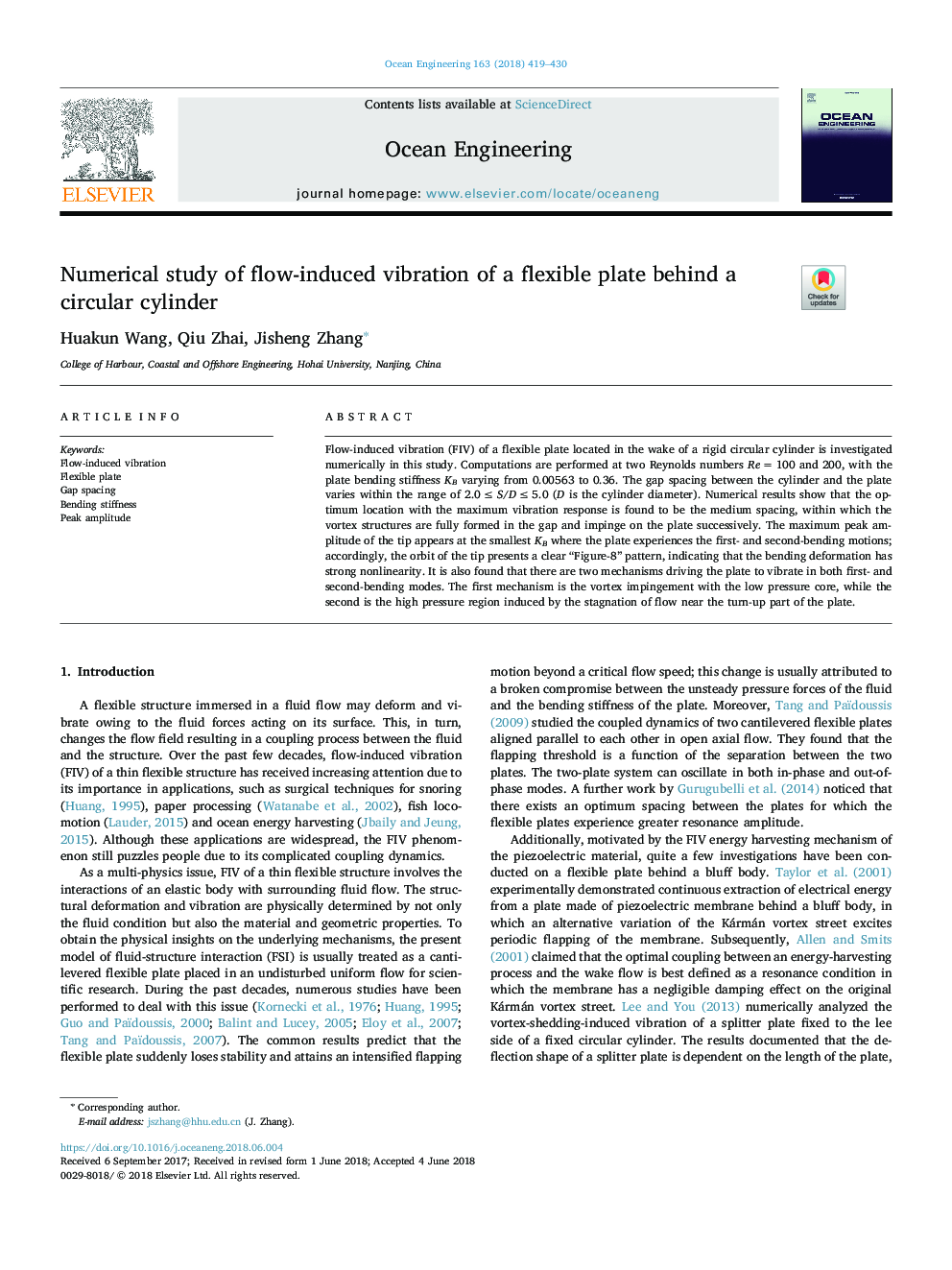| Article ID | Journal | Published Year | Pages | File Type |
|---|---|---|---|---|
| 8062029 | Ocean Engineering | 2018 | 12 Pages |
Abstract
Flow-induced vibration (FIV) of a flexible plate located in the wake of a rigid circular cylinder is investigated numerically in this study. Computations are performed at two Reynolds numbers Reâ¯=â¯100 and 200, with the plate bending stiffness KB varying from 0.00563 to 0.36. The gap spacing between the cylinder and the plate varies within the range of 2.0â¯â¤â¯S/Dâ¯â¤â¯5.0 (D is the cylinder diameter). Numerical results show that the optimum location with the maximum vibration response is found to be the medium spacing, within which the vortex structures are fully formed in the gap and impinge on the plate successively. The maximum peak amplitude of the tip appears at the smallest KB where the plate experiences the first- and second-bending motions; accordingly, the orbit of the tip presents a clear “Figure-8” pattern, indicating that the bending deformation has strong nonlinearity. It is also found that there are two mechanisms driving the plate to vibrate in both first- and second-bending modes. The first mechanism is the vortex impingement with the low pressure core, while the second is the high pressure region induced by the stagnation of flow near the turn-up part of the plate.
Related Topics
Physical Sciences and Engineering
Engineering
Ocean Engineering
Authors
Huakun Wang, Qiu Zhai, Jisheng Zhang,
